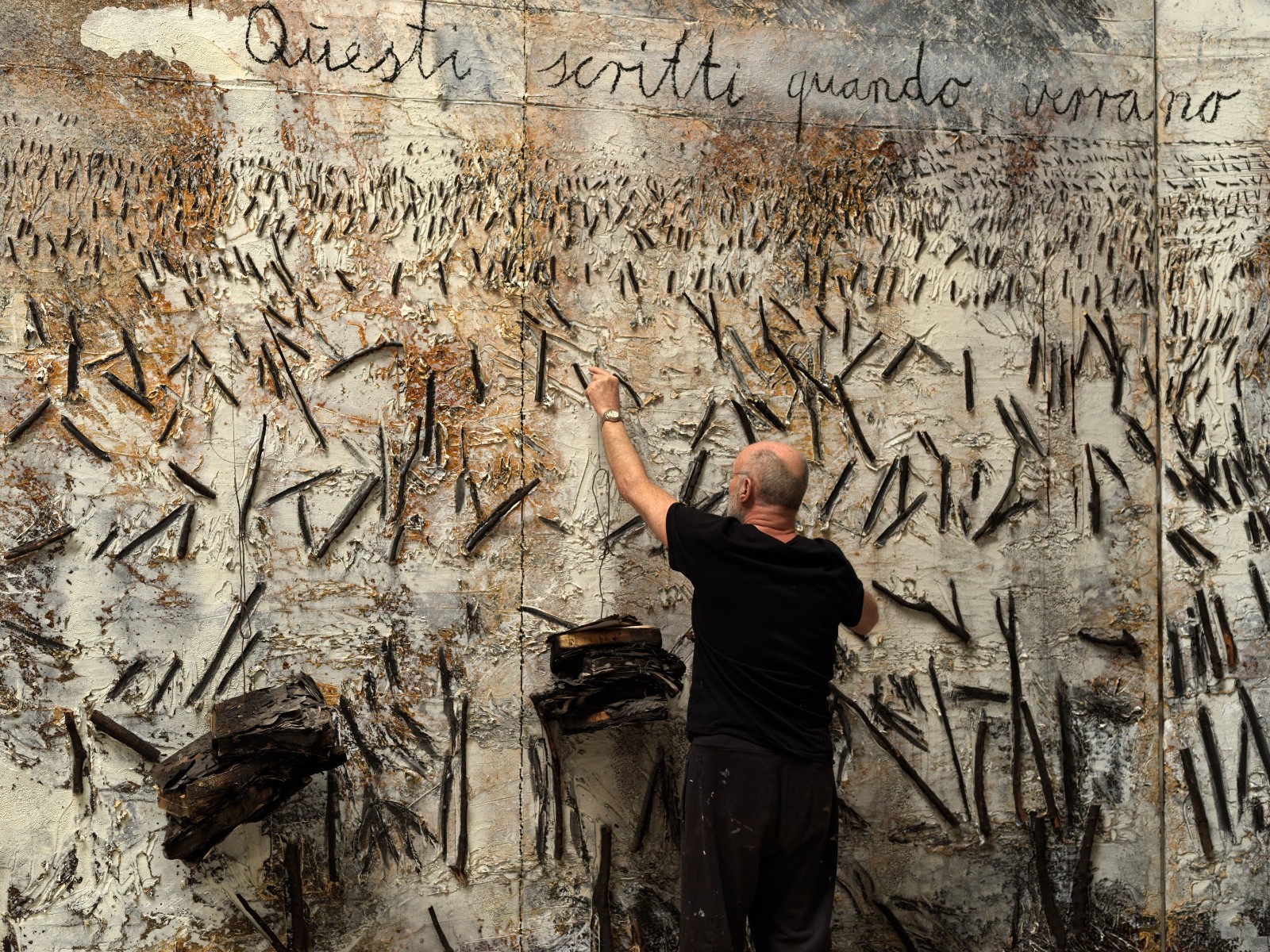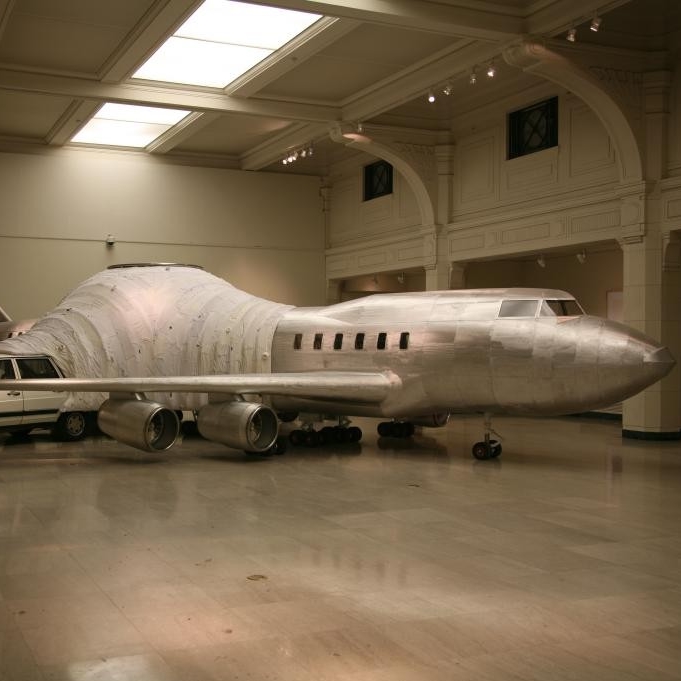
Installation view. © Anselm Kiefer. Photo: Andrea Avezzù. Courtesy Gagosian and Fondazione Musei Civici Venezia.
The exhibition featuring new work by Anselm Kiefer, with a title as Questi scritti, quando verranno bruciati, daranno finalmente un po’ di luce (These writings, when burned, will finally cast a little light), coincides with the 59th Biennale di Venezia and takes its title from the writings of the Venetian philosopher Andrea Emo (1901–1983). Kiefer was invited by the Fondazione Musei Civici di Venezia to present a site-specific installation of paintings that respond to both the Sala dello Scrutinio—one of the most important spaces in the Palazzo Ducale—and the history of Venice, as it is also a part of the celebrations for the 1600th Anniversary of the Foundation of Venice.
The series of paintings produced specially for the Palazzo Ducale in 2020 and 2021 are arranged in the space and magnificent setting of the Sala dello Scrutinio, engaging closely with the thirty-three monumental paintings on the ceiling and with the heroic values expressed by the palace’s entire decorative scheme. The show underlines the role of contemporary art in reflecting on universal themes, transcending Venice and opening up to current philosophical perspectives.
 Anselm Kiefer has created site-specific paintings for the Palazzo DucalePhoto © Georges Poncet
Anselm Kiefer has created site-specific paintings for the Palazzo DucalePhoto © Georges Poncet
The invitation to Kiefer by the Fondazione Musei Civici dates back to 2019, and the decision to host his work in the Palazzo Ducale was aimed at showing the ability of this site — a symbol of the Serenissima Republic, or Most Serene Republic — to still serve as a dynamic cultural center and not just a memory.
It was a great challenge because it involved adding a new series of paintings to these rooms, even if temporarily, after almost three hundred years, installing them on top of the older ones. Historically, this was something that happened in response to changing tastes or needs of the state. It was an even greater challenge for Kiefer to work alongside important painters from the past — Tintoretto, Palma il Giovane, Andrea Vicentino — who had been called upon by the Senate of the Republic to repaint the glory of Venice, on land and sea, on the walls of the Sala dello Scrutinio after the devastating fire of 1577.
The result of Kiefer’s impressive undertaking is before our eyes, beginning with the title, a quotation from the philosopher Andrea Emo; both he and the artist remind us that these paintings — as in the inescapable plan of life — emerge from negation, the cancellation of others on which they are superimposed. Those paintings are in a certain sense the outcome of the fire that destroyed the room’s earlier decoration, and the new paintings too are destined to die when they are removed from the Palazzo Ducale. The tragic and irresolvable unity of opposites.
Venice is at the center of this striking contemporary installation, not as an object to be celebrated but rather as a grand metaphor for cultural transits and passages between East and West, as a pretext for a narrative that brings back to the surface the stratification of millennial myths, of solitudes and anxieties to which the artist gives form through a new epic with accents as grave as the darkness of our time.
Supported by Gagosian with the collaboration of Soprintendenza Archeologia, Belle Arti e Paesaggio per il Comune di Venezia e Laguna.
Courtesy of Anselm Kiefer and Palazzo Ducale in Venice.




























